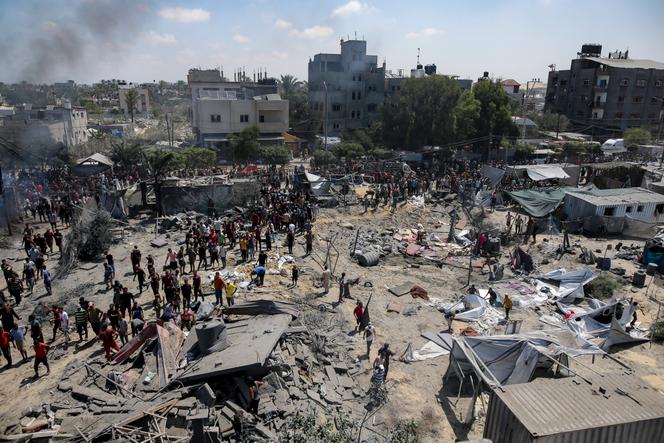


The Israeli army conducted major strikes in the Khan Yunis region of the Gaza Strip on Saturday, July 13, claiming to have been targeting Hamas military chief Mohammed Deif and a Khan Yunis brigade leader, Rafa Salama, who was with him. Nonetheless, it has so far been unable to determine whether these men, who have eluded Israeli forces during 10 months of war, had been killed.
It maintained that it had spotted them when they were out in the open, moving from one hideout to another. The army quickly presented aerial photographs of a walled enclosure dotted with a few low buildings, from which Deif had emerged, it said, under the cover of trees, to the west of Khan Yunis. Such an extensive area, walled in and with few structures, is uncommon in this zone defined by the army as a safe haven for displaced Gazans, whom it has encouraged to settle there, even though it has continued to carry out bombings in the area. According to the United Nations, around one and a half million people have been living crammed together in this region in huge, dusty, overcrowded tent cities, forced to endure unsanitary conditions, hunger and thirst.
Hamas has dismissed Israel's claims, saying that "allegations about targeting leaders are false" and designed "merely to cover up the scale of the horrific massacre." In Gaza, few people would recognize the face of this shadowy figure even if he were standing right in front of them.
The Ministry of Health in Hamas-administered Gaza reported at least 71 dead and 289 wounded, making this attack one of the conflict's deadliest. It decried the "heinous massacre by the occupation [Israel] of citizens and displaced persons in the Al-Mawasi area of Khan Yunis." The attack took place near a drinking water and food distribution point.
Witnesses told the Associated Press of bombardments after the initial attack. Several amateur videos released in the ensuing hours showed one of these strikes, conducted close to firetrucks and ambulances parked near a wooded enclosure. Other images showed a vast crater and burned-out cars. Victims were transported on the roofs of cars and in donkey-drawn carts. "A number of victims are still under the rubble and in the streets, and ambulances and civil defense teams are unable to reach them," the Ministry of Health said in a statement.
The director of the Kuwaiti field hospital in Rafah, Suhaib Al-Hams, reported that most of the wounded transferred to his facility were seriously injured, with some undergoing amputations. "A real disaster is happening now amid the collapse of the healthcare system," he said in a statement. This week, four schools housing displaced persons were targeted by strikes, killing at least 49 people, according to sources in Gaza, including Hamas.
You have 63.13% of this article left to read. The rest is for subscribers only.
